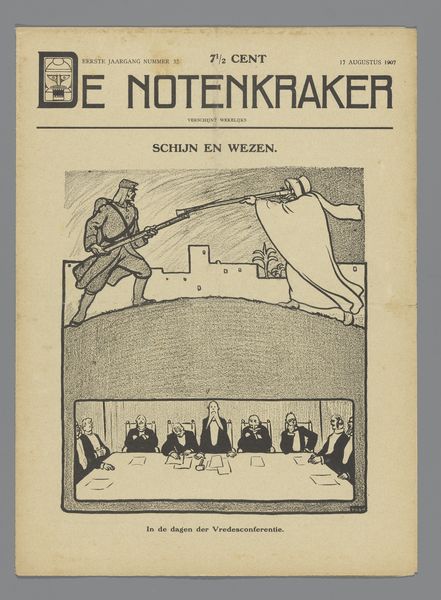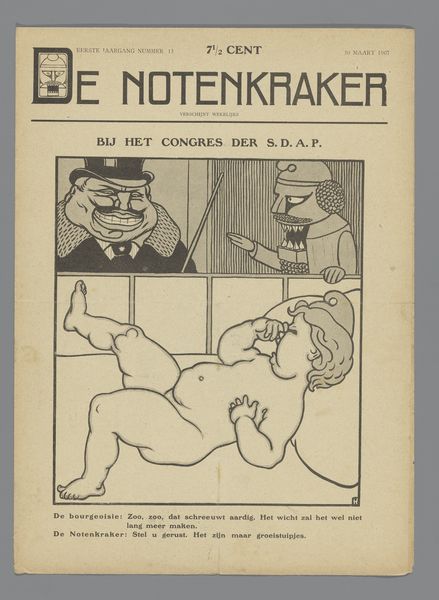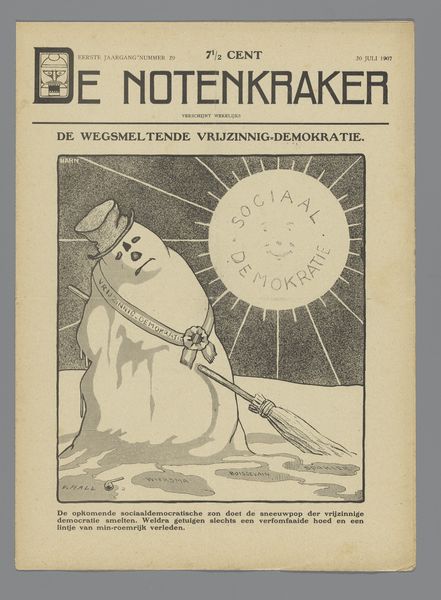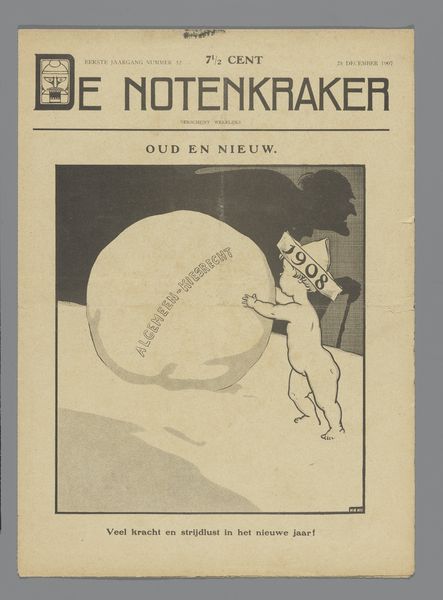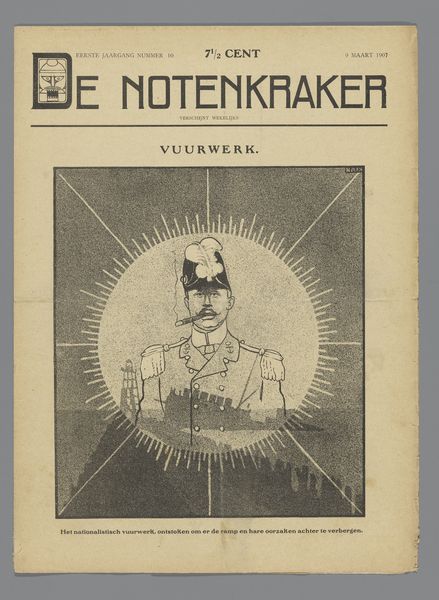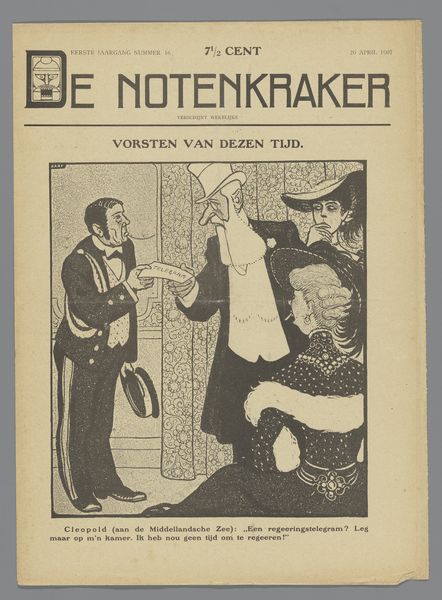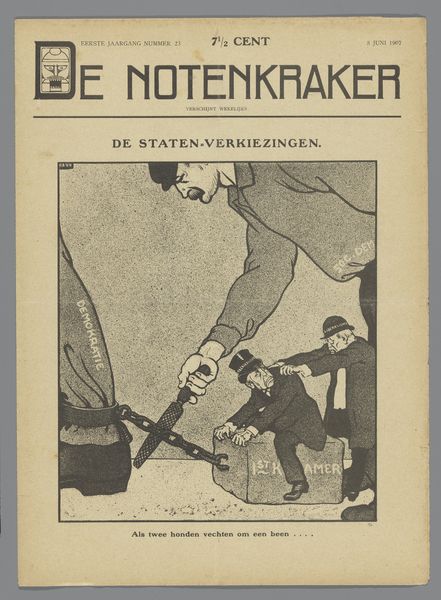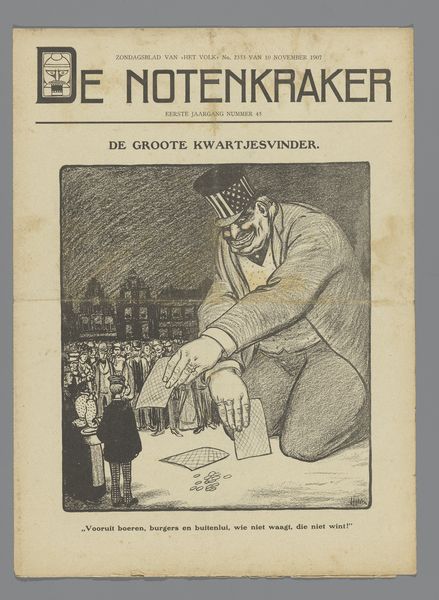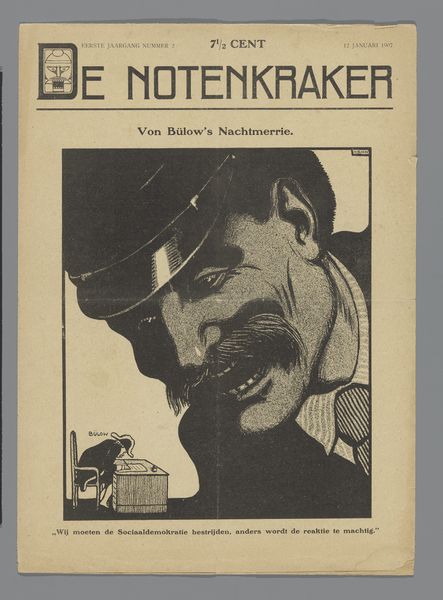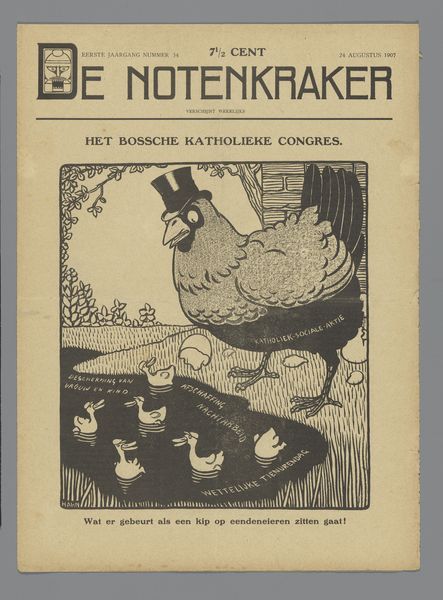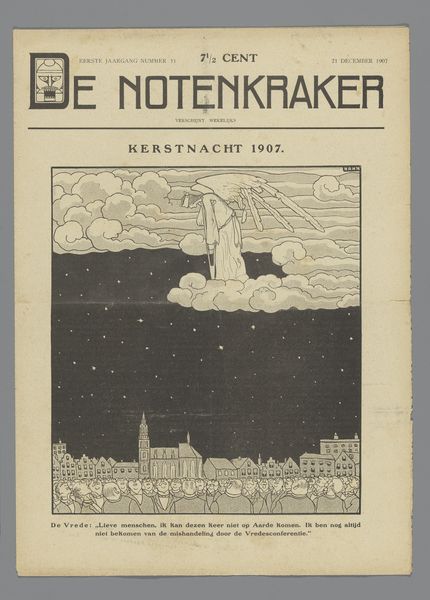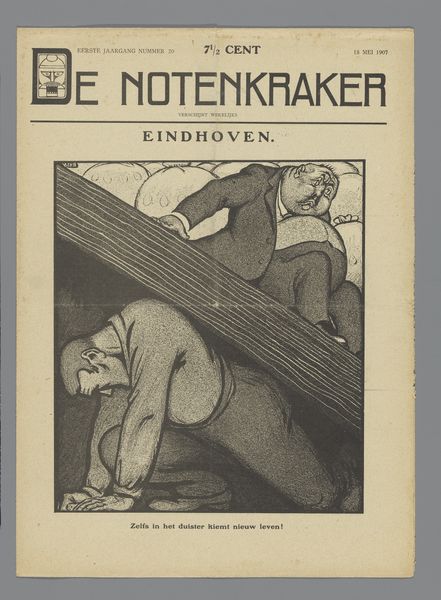
drawing, graphic-art, print, paper, poster
#
drawing
#
graphic-art
# print
#
figuration
#
paper
#
symbolism
#
poster
Dimensions: height 34.8 cm, width 25.2 cm
Copyright: Rijks Museum: Open Domain
Curator: Let's take a moment to examine this compelling piece from potentially between 1907 and 1928 titled "De notenkraker," attributed to Albert (I) Hahn. This work utilizes print and graphic art techniques, resulting in a striking image rendered on paper. What's your initial reaction? Editor: It's visceral. That nutcracker, it looks like some monstrous machine, devouring what appears to be… a person’s head? The scale and black and white drawing emphasize a sense of industrial, consuming force. Curator: Precisely. This imagery ties into early 20th-century social critiques of capitalism. Note the figures in the background, seeming to flee in terror. Hahn often employed symbolism in his pieces to make sharp political statements. The magazine "De Notenkraker" was itself known for satirical illustrations, using art to advocate for social change. This issue being early, potentially the first year, one can gather this might represent a turning point. Editor: I'm curious about the actual printing process. You see how the thick, bold lines define the nutcracker. Consider the labour involved in creating this poster to reach a mass audience. What materials are employed and how do those material realities affect and contribute to the message and the access? I wonder if cheap materials correlate with accessible politics. Curator: Absolutely. The means of reproduction were crucial to its impact. Hahn used his artistic skills as a form of activism, challenging societal norms and power structures. It seems fitting that his art makes its way to a much wider audience than its original era allowed. His commentary rings clear to audiences past and present who resist tyranny in all forms. Editor: It leaves me thinking about the physical act of creating art, then mass production, versus the subjects that the art displays. So much toil in bringing something critical of toil to a large audience… Curator: I find it especially powerful considering it makes you, the viewer, consider the material itself while simultaneously recognizing its ties to class struggles throughout time. Editor: It’s an artwork that asks critical questions about art production as social practice even as it delivers such strong imagery. Thank you for bringing this historical moment alive!
Comments
No comments
Be the first to comment and join the conversation on the ultimate creative platform.

